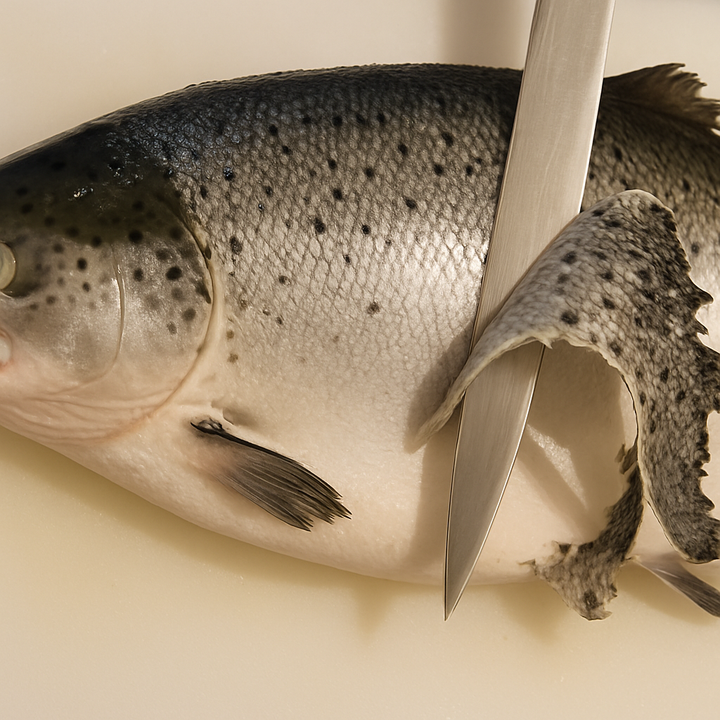Essential Tips Every Oyster Lovers Should Know
Whether you're an oyster aficionado or a newcomer to this marine delicacy, understanding what makes a good oyster can enhance your appreciation significantly. Equip yourself with these key insights to instantly elevate your raw oyster connoisseurship
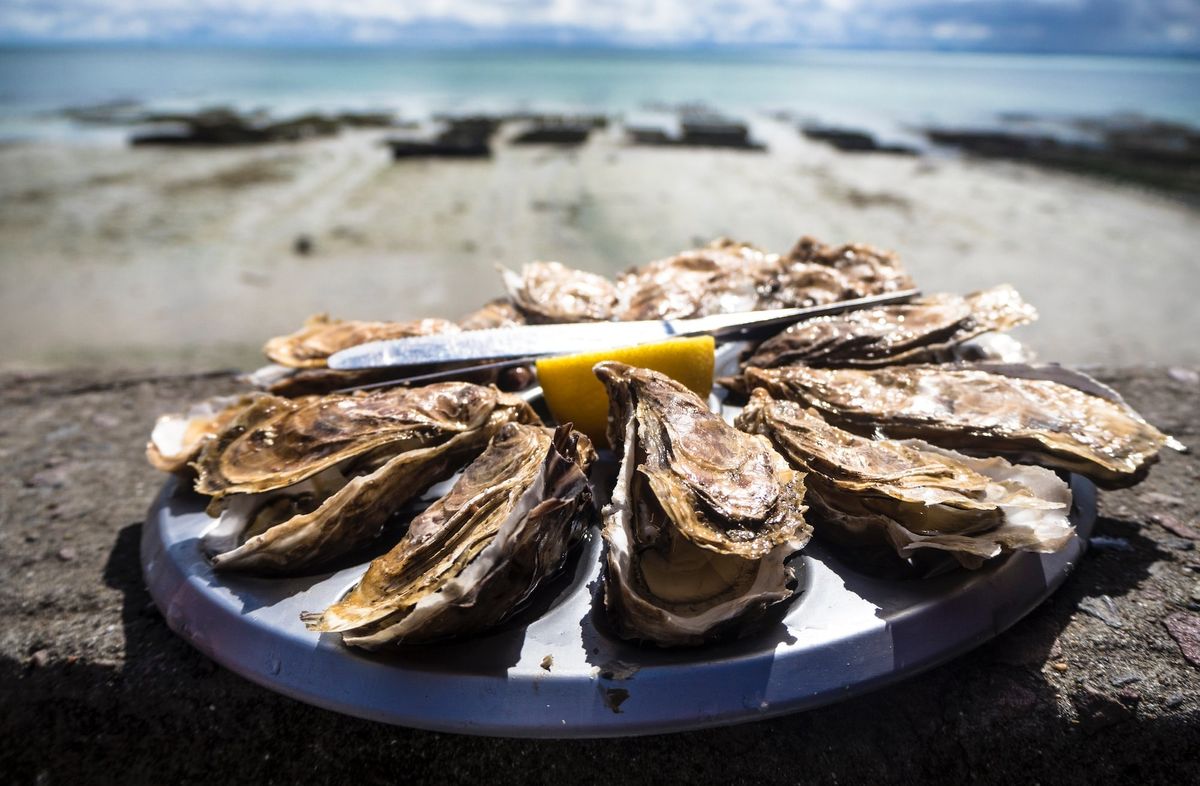
Oysters often elicit strong reactions, with individuals usually falling into camps of adoration or aversion.
Their distinct briny flavor and unique texture are usually the culprits behind this divide. It's uncommon to encounter someone with a lukewarm opinion on this hard-shelled seafood treasure.
Whether you're a seasoned oyster aficionado or a newcomer to this marine delicacy, delving into the nuances of what makes a good oyster can greatly enhance your appreciation.
Here are key insights every oyster enthusiast should equip themselves with:
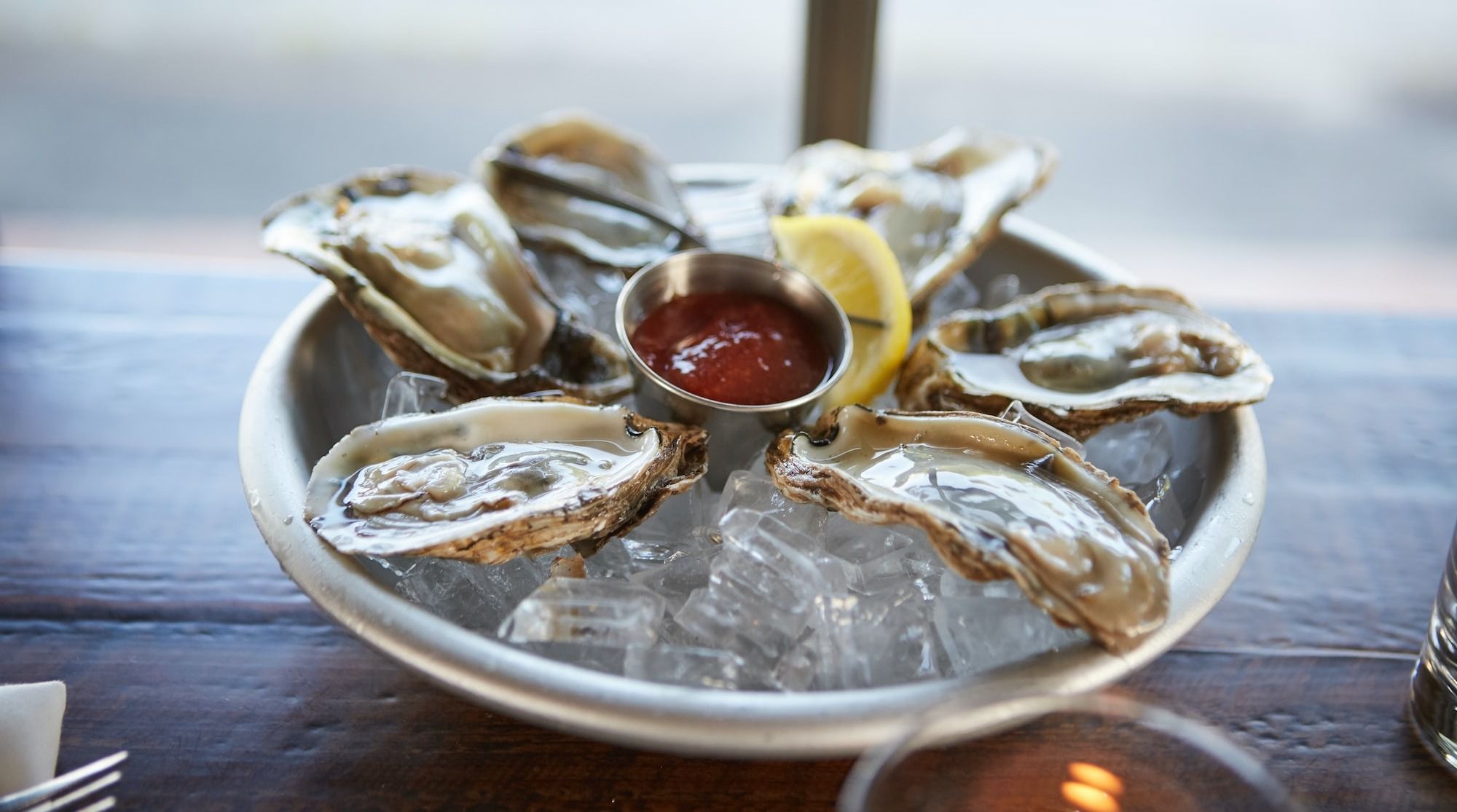
Understanding Oyster Varieties
Oysters boast a diverse species spectrum, each carrying a unique flavor signature. Delve into the different types of oysters to discover what tantalizes your taste buds the most.
Kumamoto Oysters
Originating from Yatsushiro Bay, Kumamoto Prefecture, these small, cup-shaped oysters, now mainly farmed in the US, offer a mild brininess with a sweet Hami melon hint, ideal for oyster newcomers.
Pacific Oysters
Originating from the coasts of Japan, Pacific Oysters, known for their environmental resilience, have spread across various continents, including the French finest oysters in Marennes Oléron basin.
They have a sweet, mild flavor with a delicate, briny finish, often accompanied by a slight metallic taste, offering a smooth and enjoyable palate experience.
While they resemble Kumamoto oysters in shape and taste, they are larger in size.
Among the Pacific Oysters, the Coffin Bay King variety from Australia stands out as one of the larger and most expensive oyster, revered for its size and exquisite flavor profile.
Atlantic Oysters
These tear-shaped, salty-flavored oysters include the robust Blue Point variety from Long Island and the briny Wellfleet oysters from Cape Cod, each delivering a distinct marine zest.
Wellfleets
Native to Cape Cod, are cherished for their crisp, briny taste, yet for a unique choice, opt for the mineral-rich Moonstones from Rhode Island or the intensely saline Olde Salts from Chesapeake Bay to intrigue your dining companions.
European Flats
European Flats, with their straighter shells and fine ridges, offer a distinct appearance. Among them, the rare Belons, originating from France's Belon River, found a new home off the coast of Maine.
Now cultivated in select regions along America's West Coast, they continue to maintain their prized rarity.
When it comes to taste, European Flats, particularly Belons, are known for their bold, metallic, and slightly briny flavor, providing a unique and sophisticated taste experience that sets them apart from other oyster varieties.
Freshness is Key: How to Spot Bad Oysters
Freshness is the cornerstone of a sublime oyster experience. Ensure a fresh, sea-breeze aroma and a tightly closed shell.
A prime oyster is plump, juicy, and has a glistening sheen, indicating freshness. It's vital to check the appearance and aroma before diving in.
Avoid oysters with cracked shells or those that remain open when touched, as they should be alive before consumption.
Your senses are crucial; a foul odor is a warning sign. While some oysters have a unique "funky" scent appreciated by aficionados, it's essential to differentiate between a robustly flavored oyster and a spoiled one.
Flavors of copper, musk, or even low tide don't necessarily denote a bad oyster.
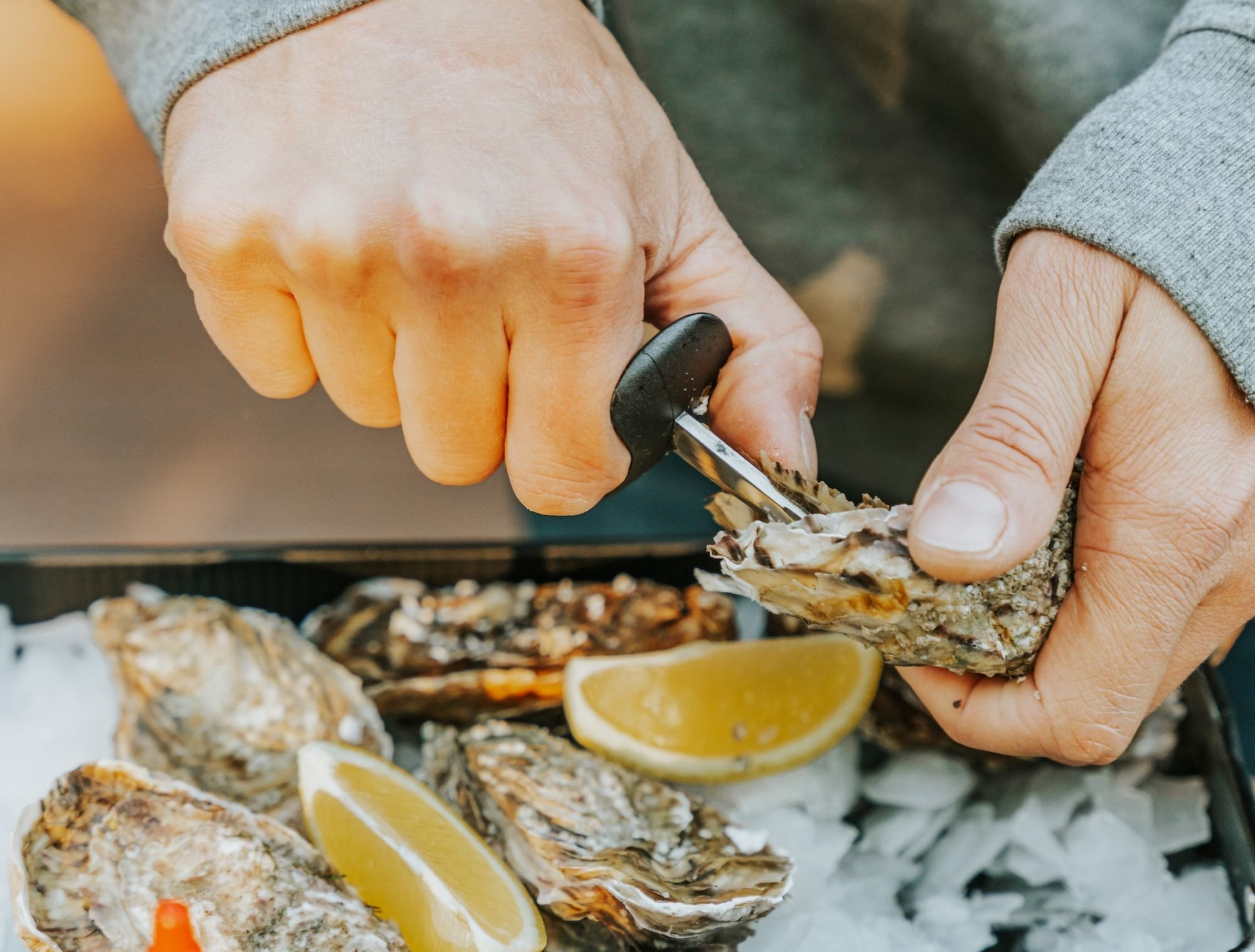
Master the Art of Shucking
Shucking oysters can be tricky, but avoiding common errors makes it easier. Here's how you should do it.
Mastering the art of shucking requires patience and technique. Start by holding the oyster firmly in a folded towel with the flat side up to ensure safety.
Locate the hinge at the oyster's narrow end, insert the tip of an oyster knife, and apply a twisting motion to pry it open.
Gently slide the knife along the inside of the top shell to sever the muscle connecting the oyster to the shell.
Remove the top shell, run the knife under the oyster to free it from the bottom shell, ensuring the oyster remains level to retain its flavorful liquor. Now, it's ready to be enjoyed!
Avoid Cracking: Don’t try to crack the oyster where the shells meet; this can cause shell fragments to mix with the meat.
Simple Accompaniments
Oysters thrive in simplicity. A splash of lemon juice, a hint of hot sauce, or a spoonful of shallot vinegar can accentuate, not overshadow, the oyster’s natural brininess and sweetness.
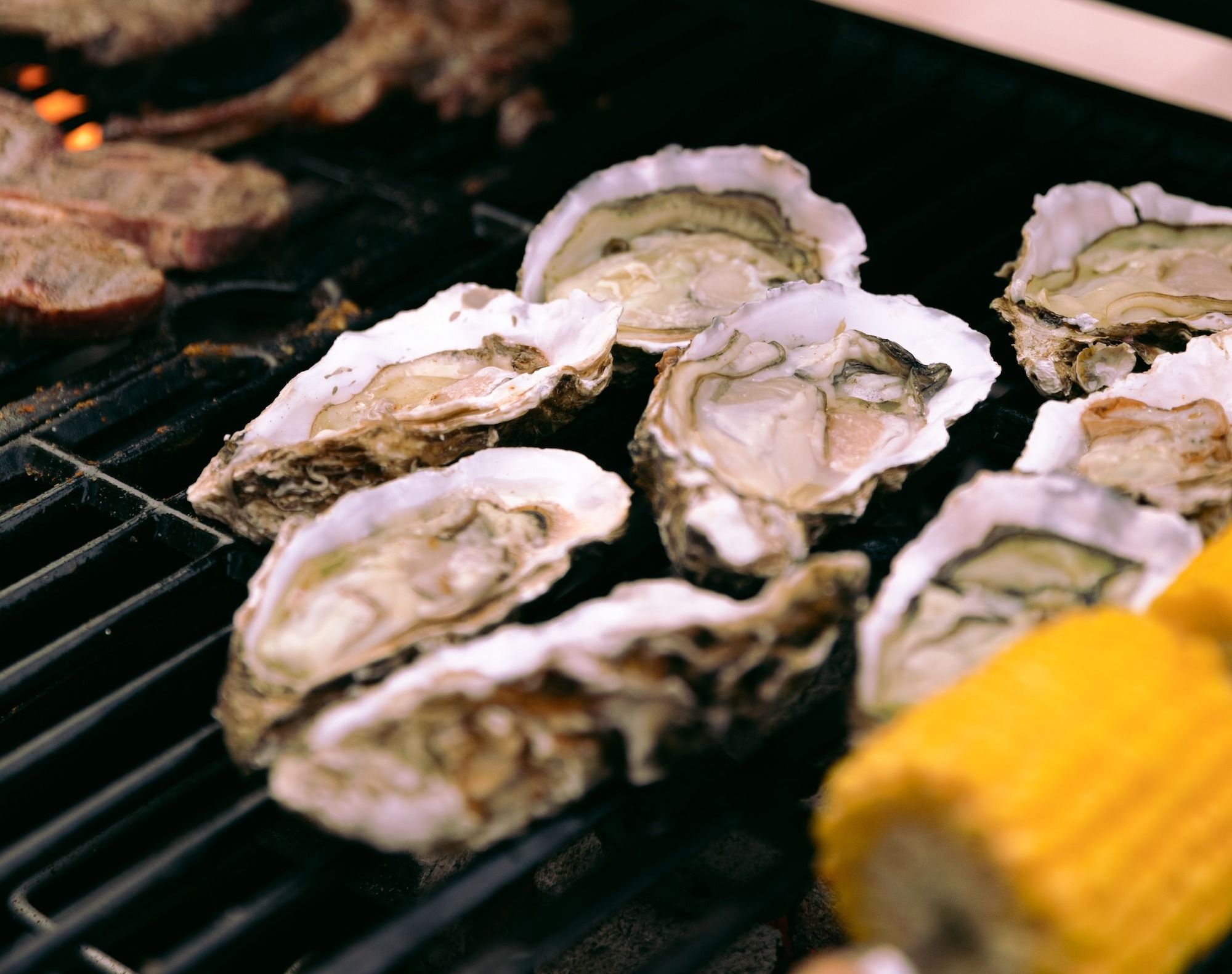
Explore Raw and Cooked Preparations
Oysters, a culinary delight, are splendid whether savored raw or cooked. Their versatility shines through in an array of preparations, from the classic oysters Rockefeller and comforting oyster stew to simple grilled offerings.
For those keen on exploring beyond the raw allure, a world of cooking techniques awaits. Be it smoked, steamed, pan-fried, or grilled, each method unveils a unique taste profile.
One enticing variant involves roasting local oysters in high-heat charcoal ovens, reaching a searing 1,000 degrees.
This preparation, garnished with a hint of Pecorino Romano cheese, garlic, and butter, and accompanied by lemon wedges, presents a cherished alternative for oyster aficionados.
Pairing with the Right Drink
The right beverage can amplify your oyster experience. Classic companions include dry white wines, champagne, or stout beers that complement the oyster’s flavor without dominating it.
Oyster Term Essentials
Liquor: This term references the savory juice encased within the oyster shell, sharing its abode with the tender meat.
Cream: A descriptor for an oyster exhibiting a soft, sweet, and buttery taste and texture.
Copper: This denotes a unique oyster profile, characterized by a bold metallic essence with a hint of green undertones.
Mignonette: A tangy accompaniment infused with shallots, designed for those who prefer to mask the oyster's natural flavor with a zesty dip.
The 'R' Month Oyster Rule
Traditionally, oyster harvest thrived from September through April, the months with an 'r' in their spelling, attributing to seasonal cycles.
However, modern farming methods now ensure a year-long supply of oysters. Despite this, many aficionados swear by the superior taste of oysters during the colder months when the seas are chillier.
Nowadays, with oysters being kept below 40 degrees from harvest to table, they're safe and savory all year round.
Health Benefits
Oysters are a nutritional treasure, rich in essential minerals like zinc, iron, and calcium, vital for immune support, oxygen transport, and bone health respectively.
They're also a good source of vitamin B12, crucial for nerve function and DNA production.
Additionally, the protein, omega-3 fatty acids, and antioxidants found in oysters contribute to heart health and overall well-being, making them not only a gourmet delight but a healthful choice.
Final Thoughts
The realm of oysters is as expansive and profound as the oceans they hail from.
Armed with these pearls of wisdom, you're on a promising pathway to evolving into a genuine oyster connoisseur, cherishing each slurp and unraveling the myriad culinary delights this humble mollusk unfolds.
